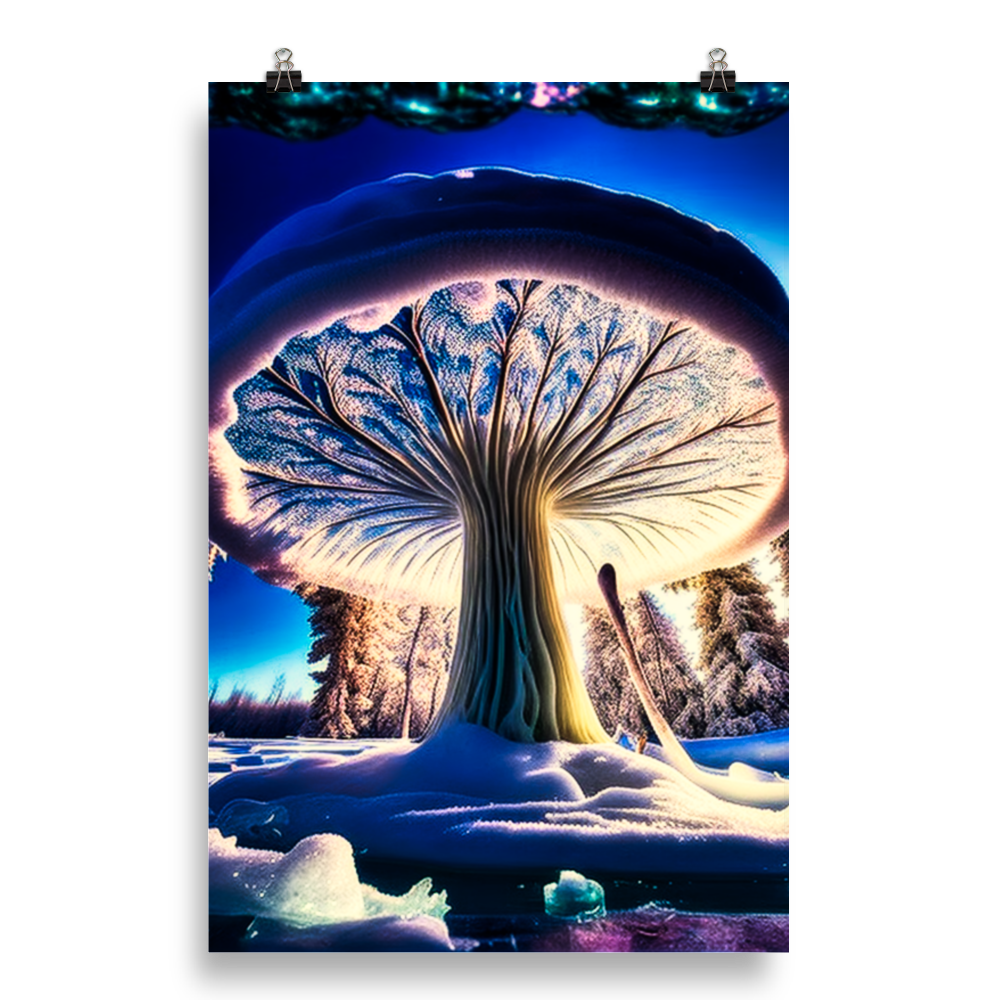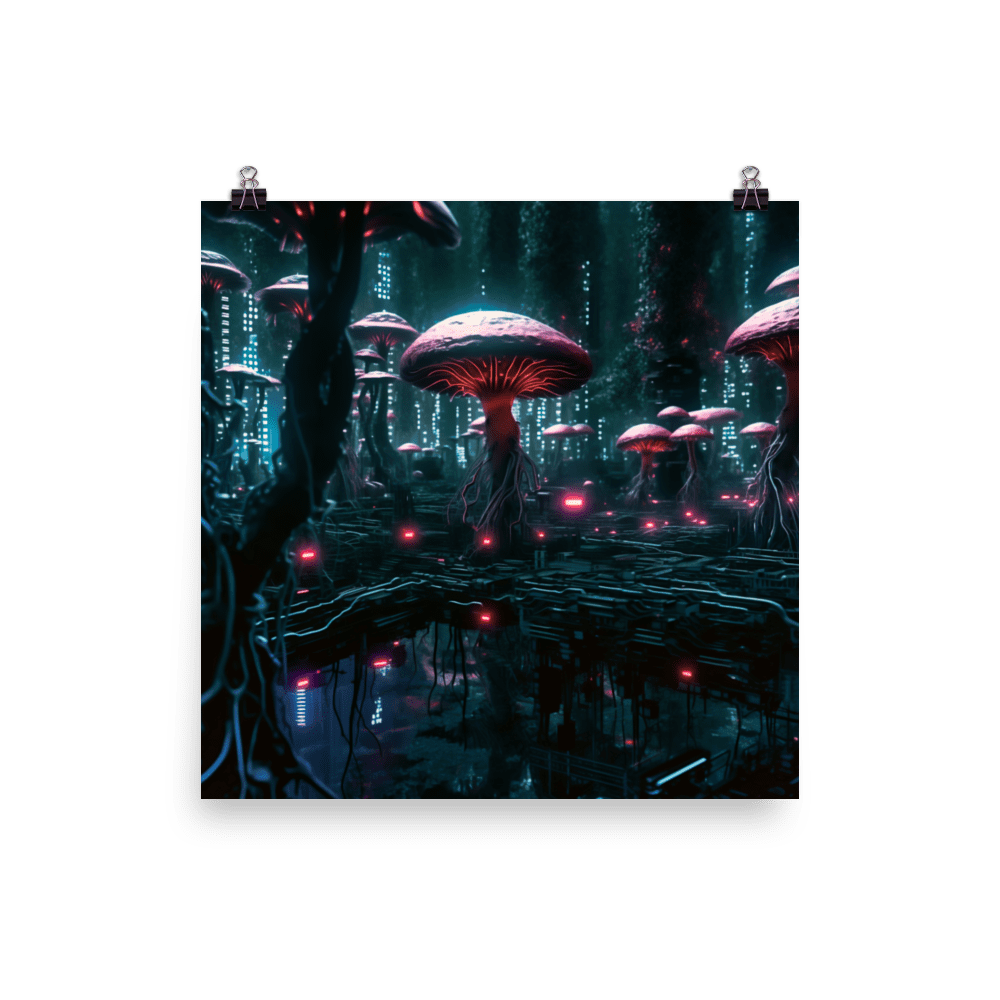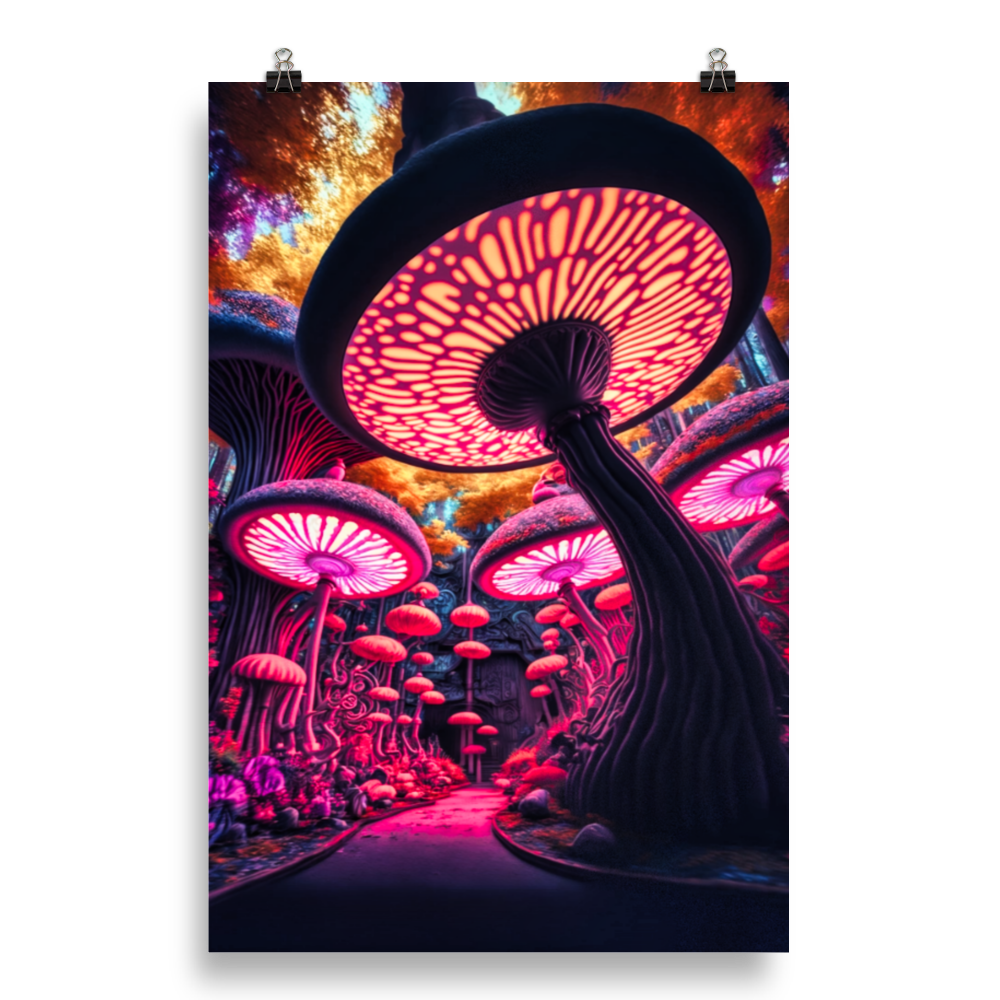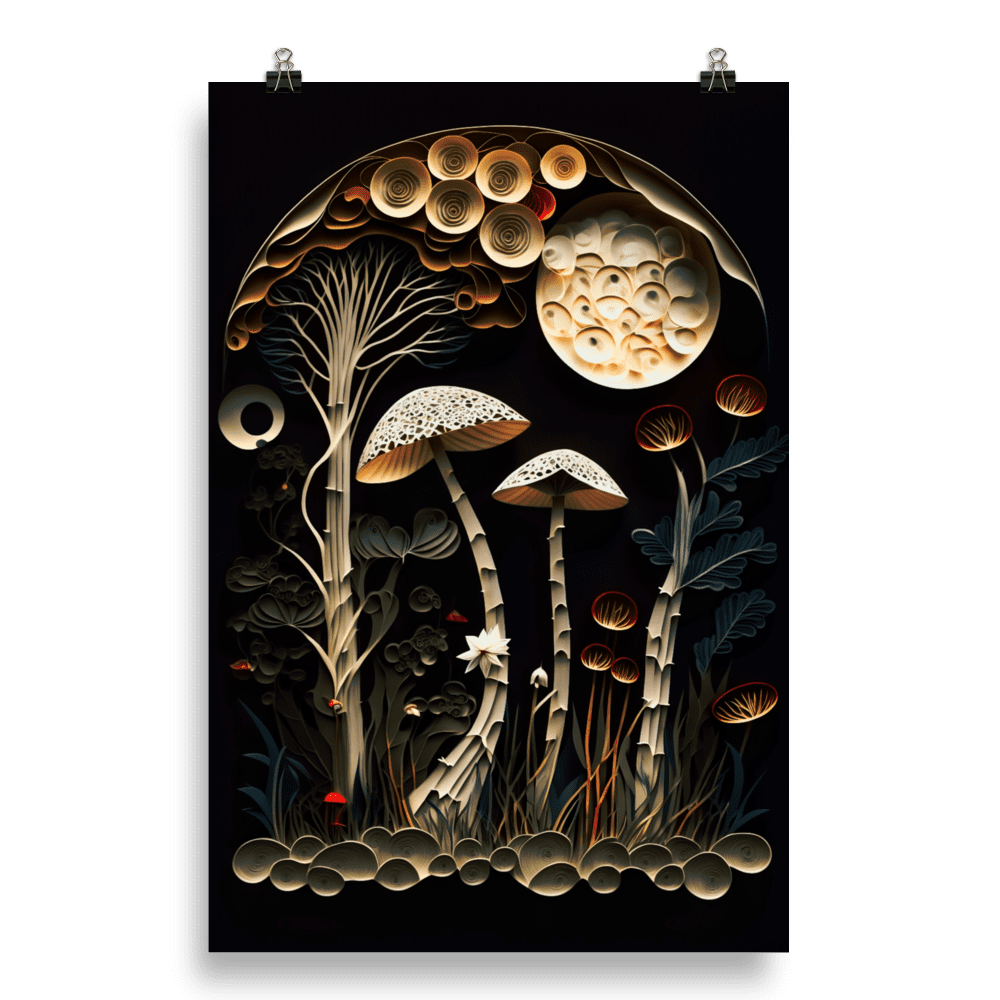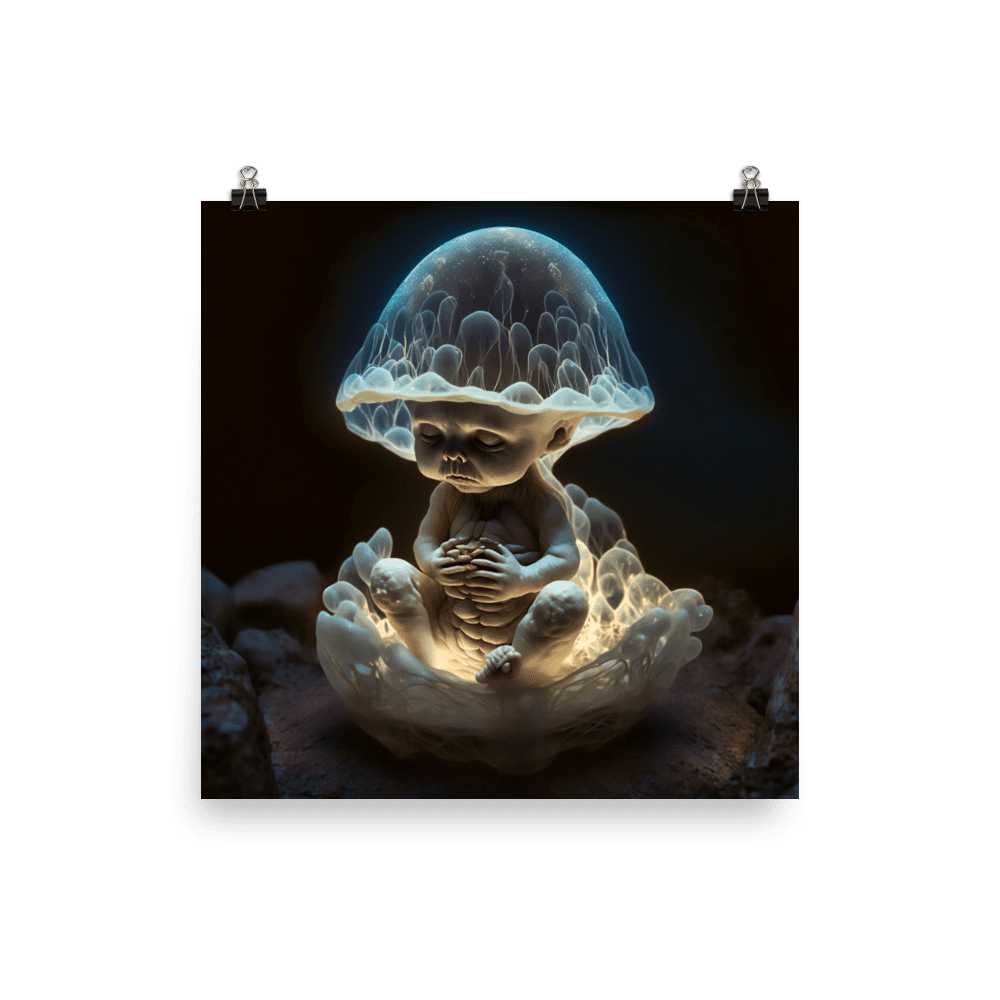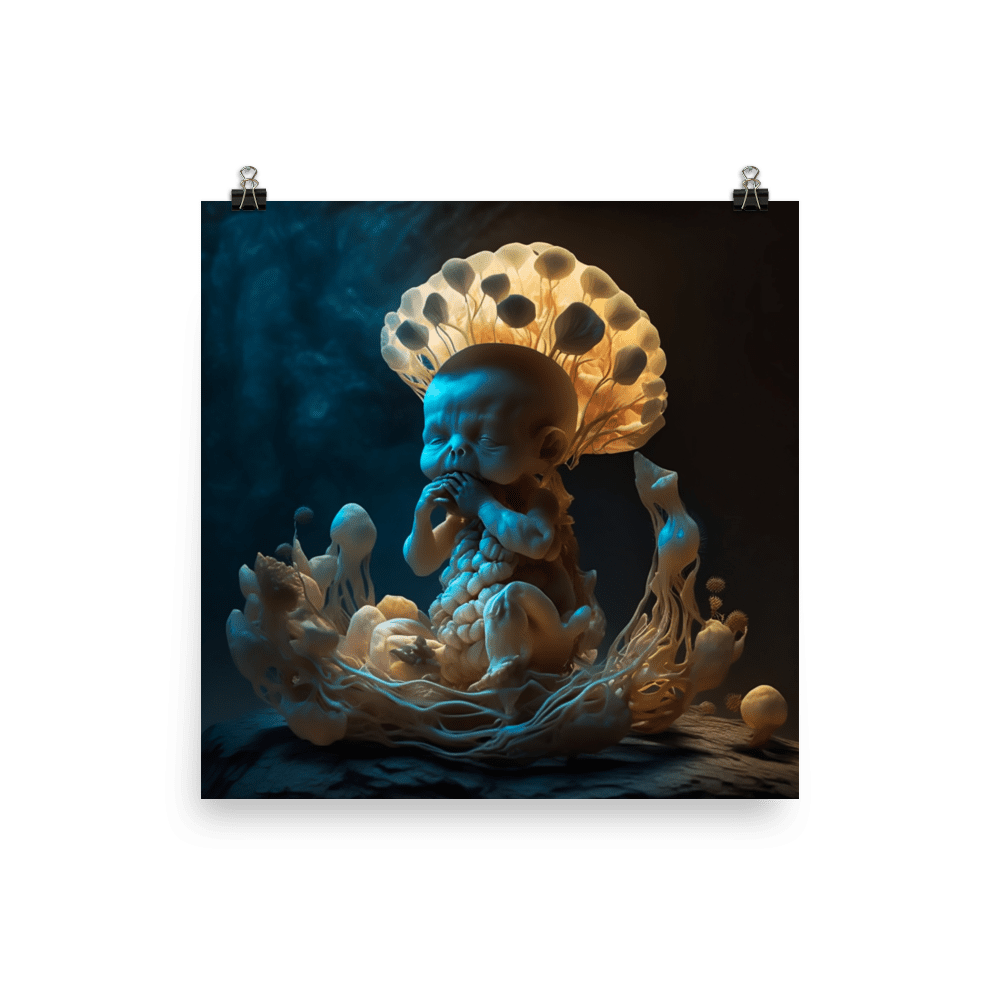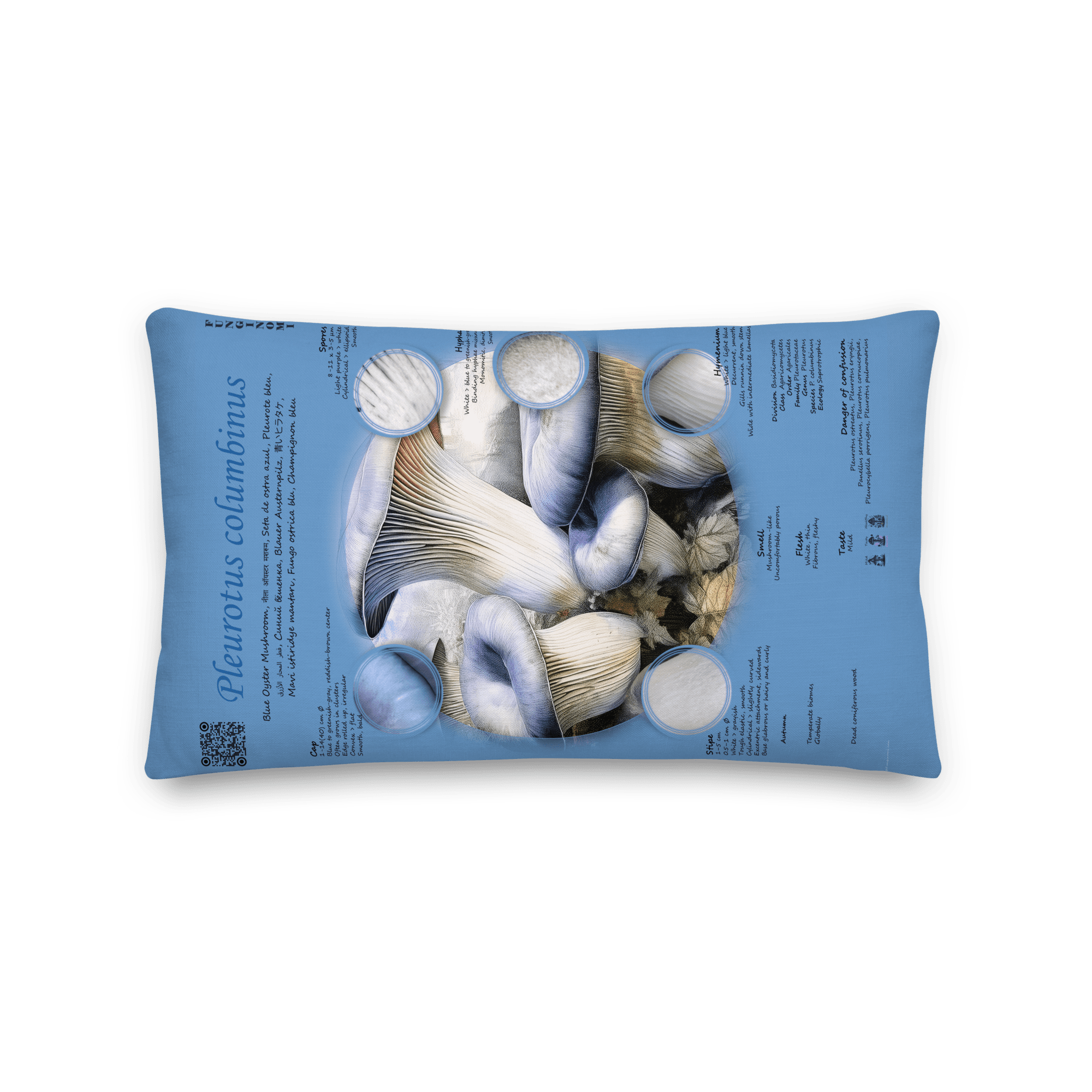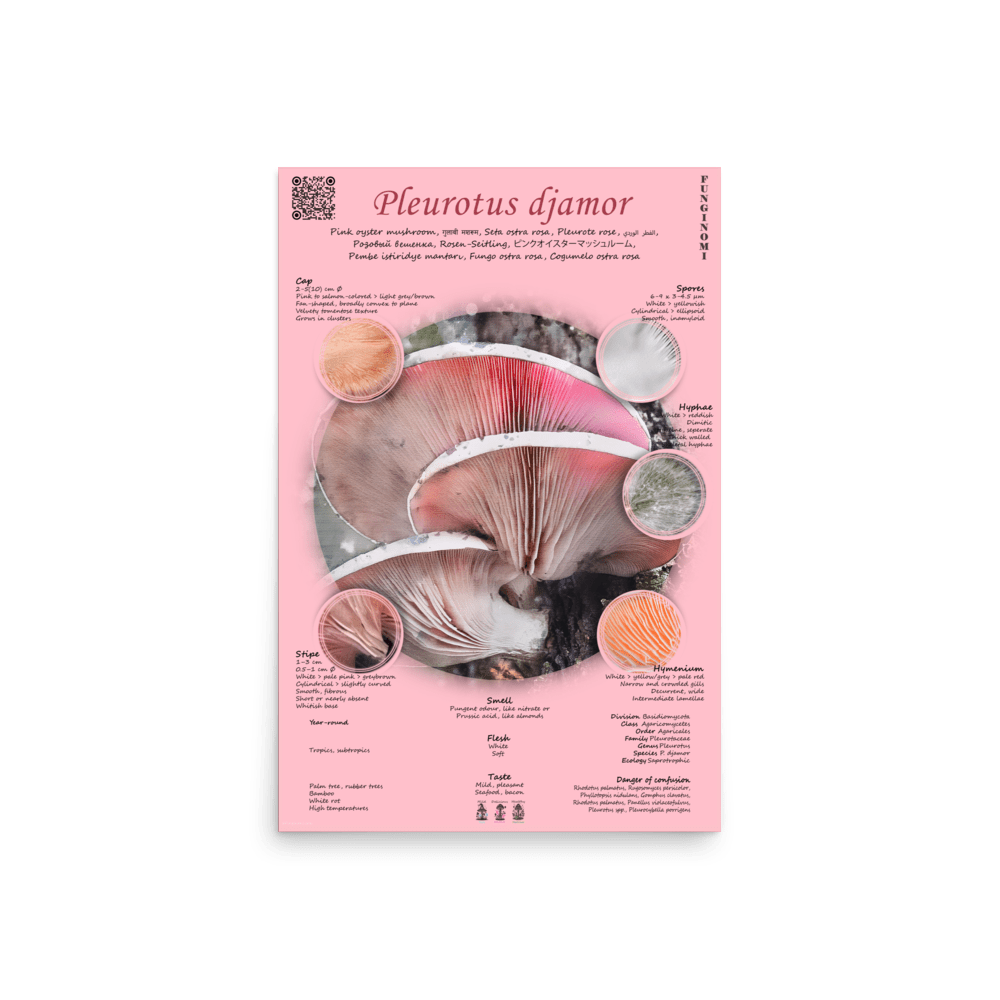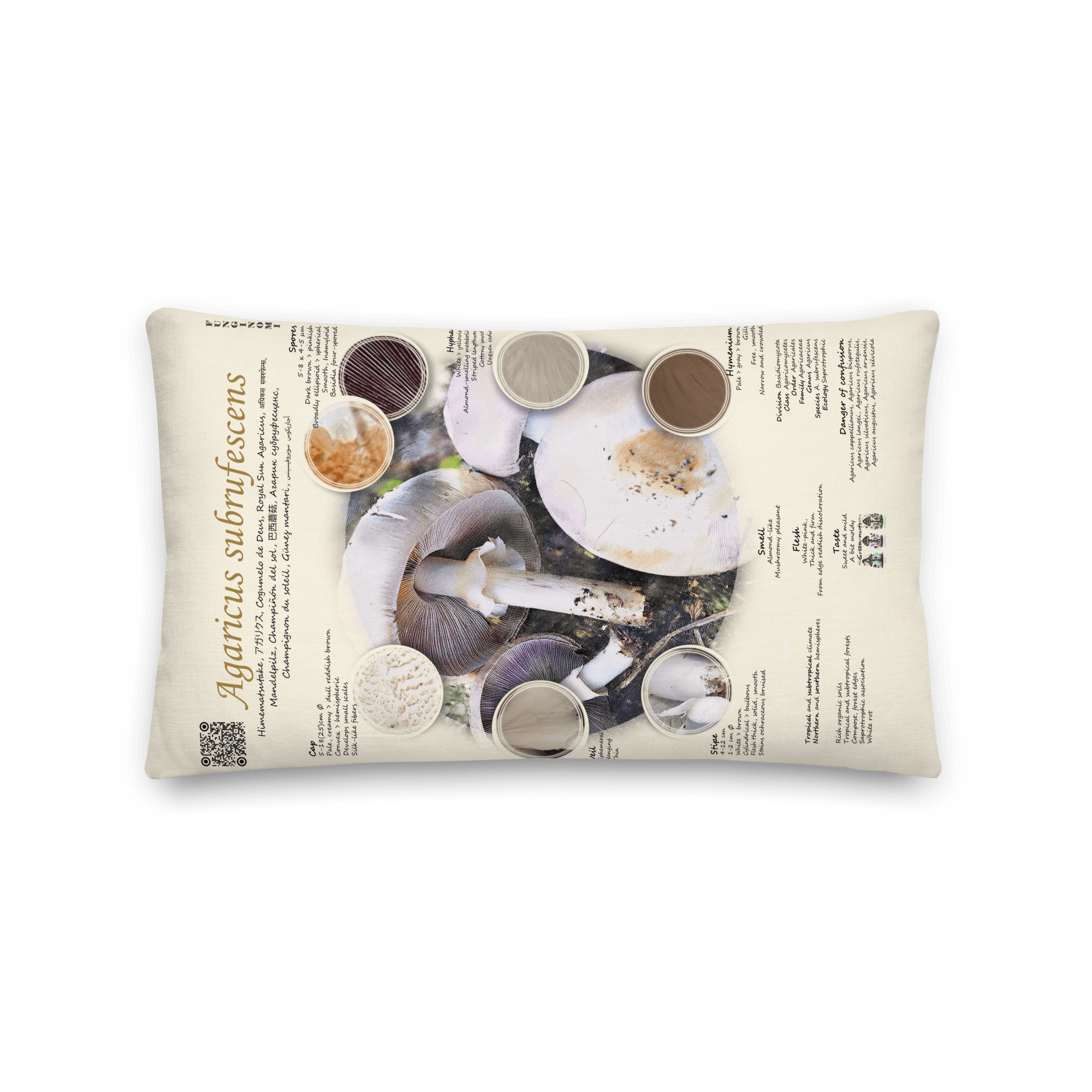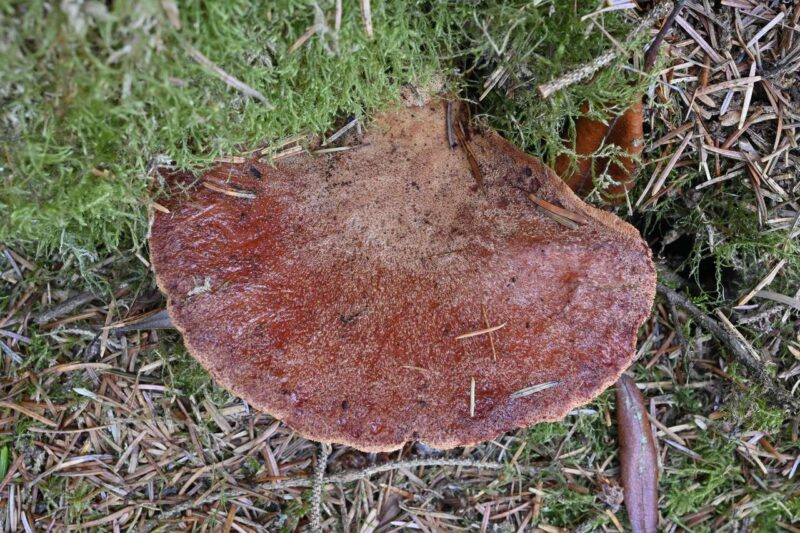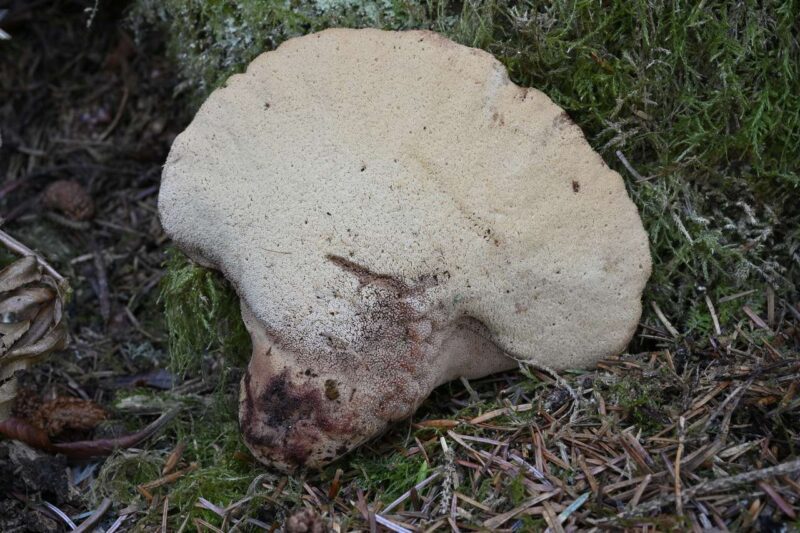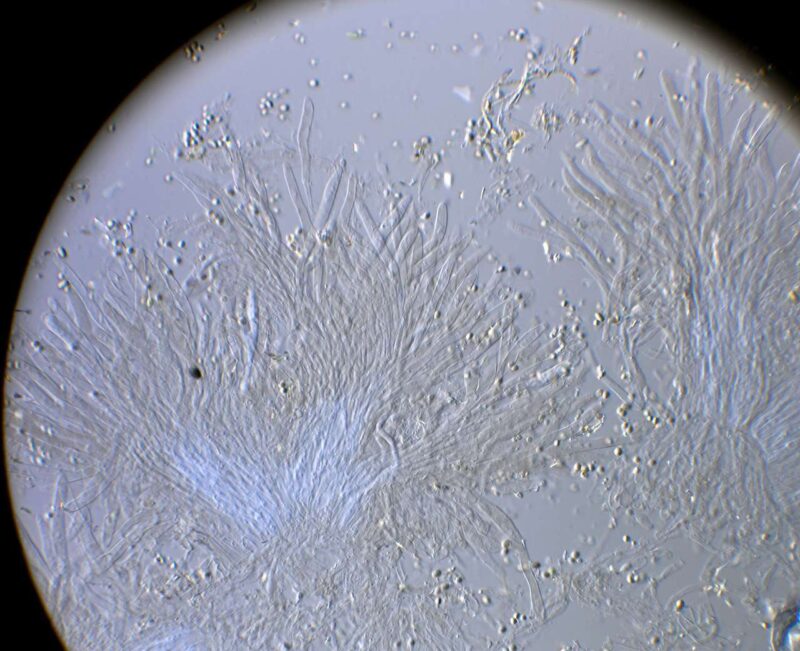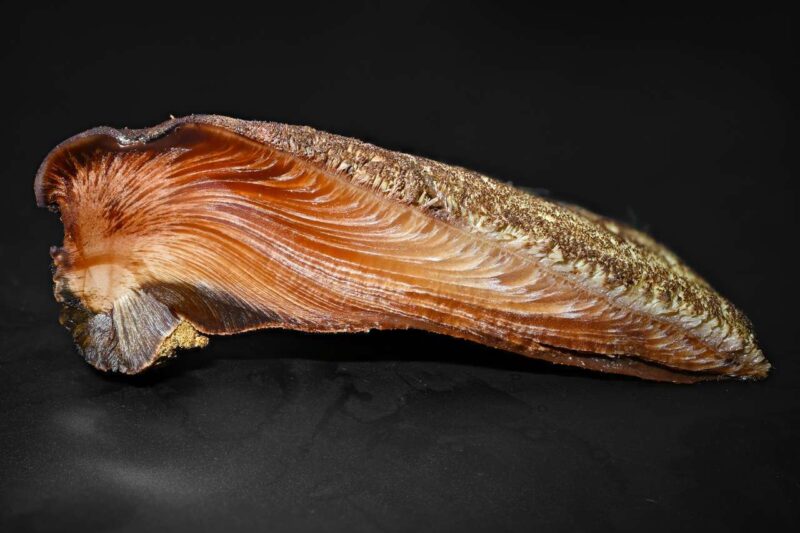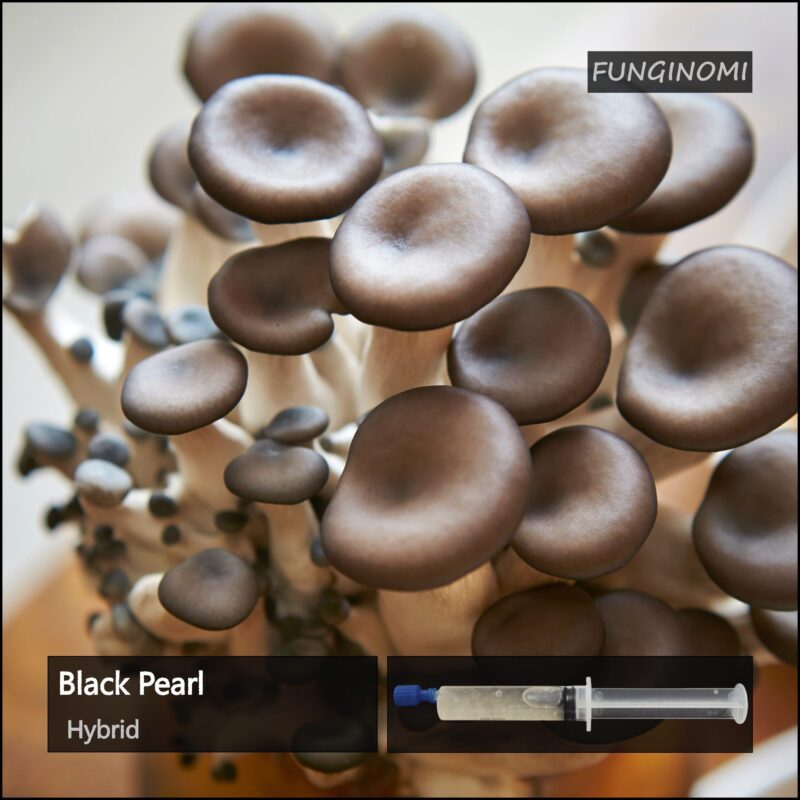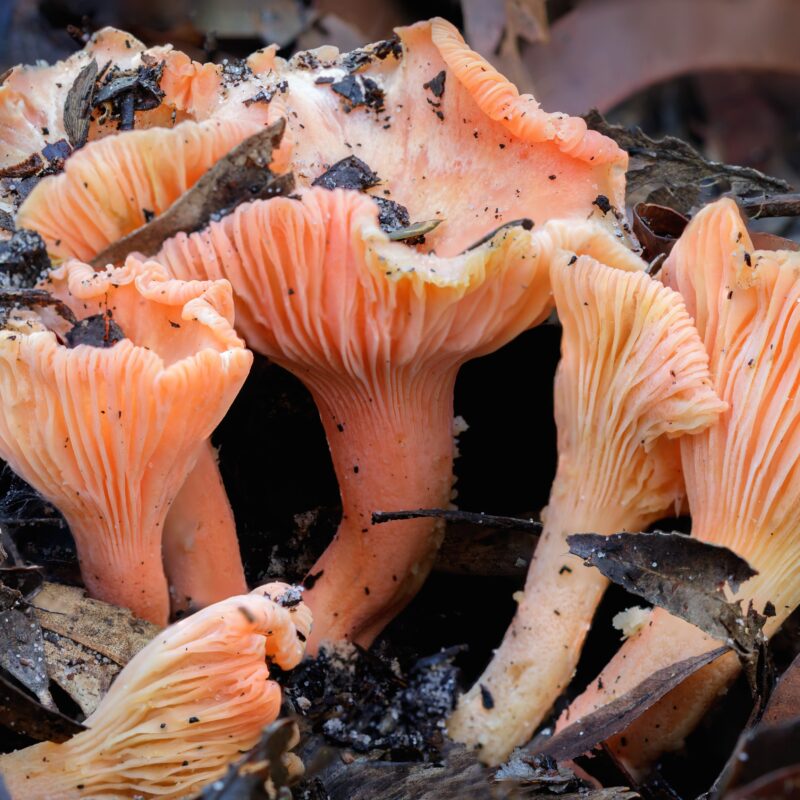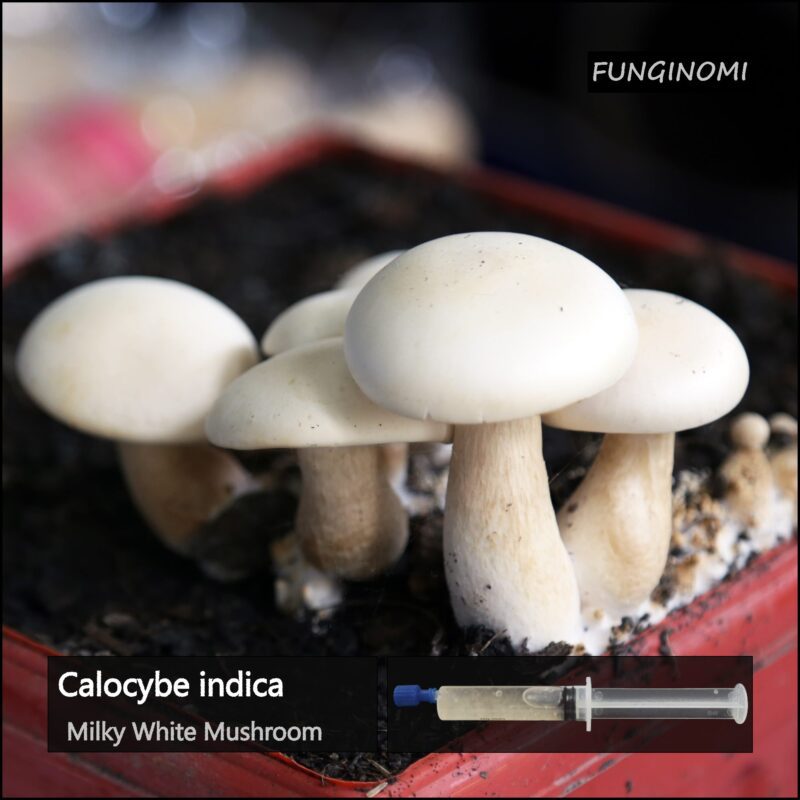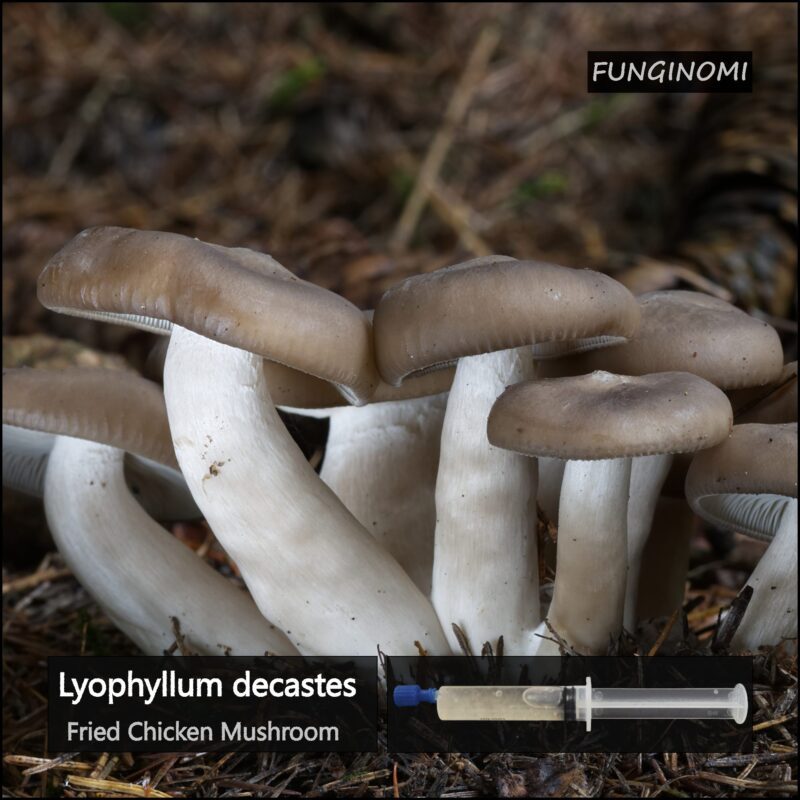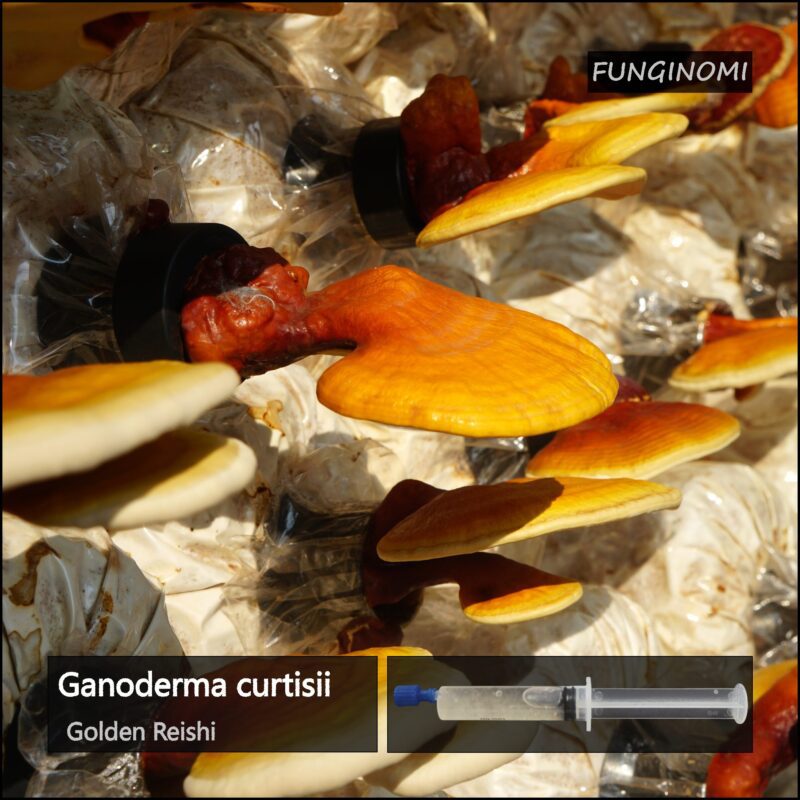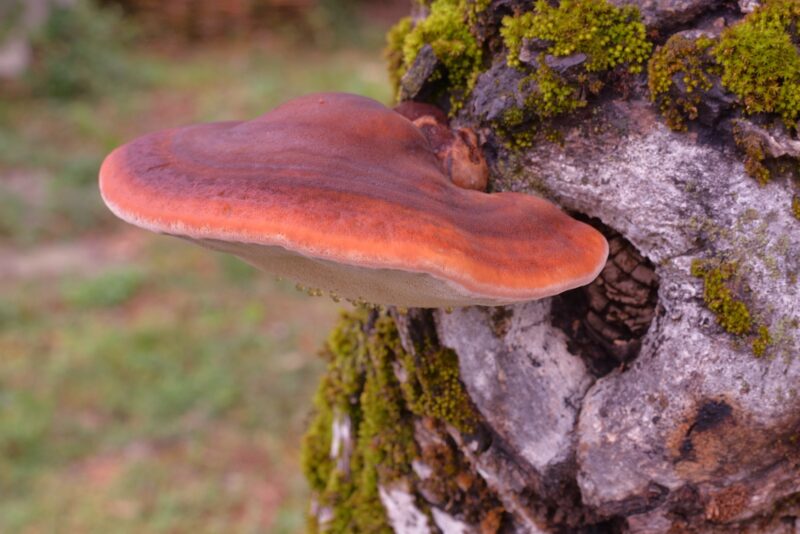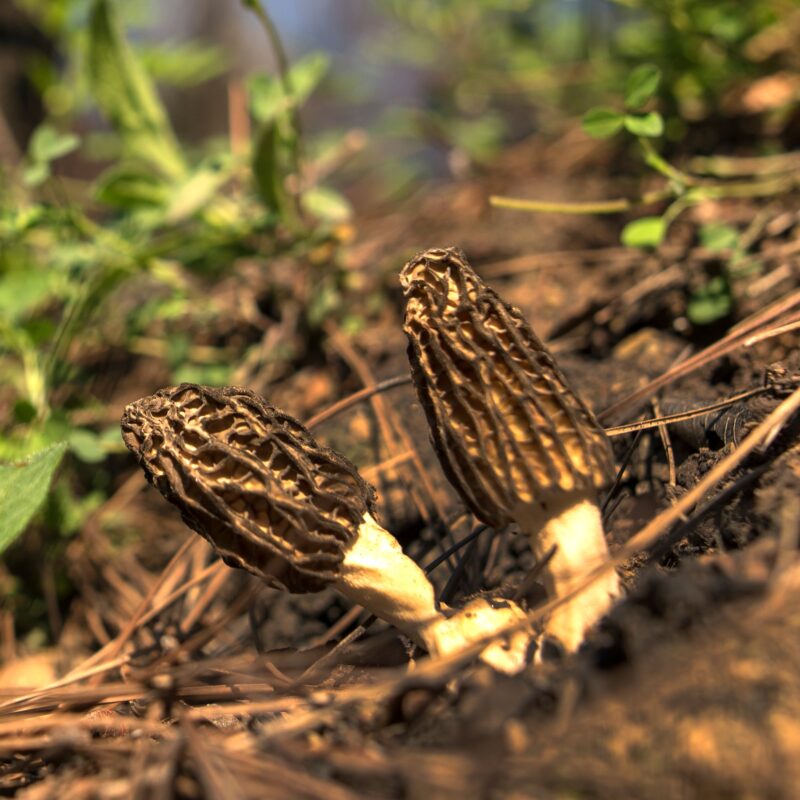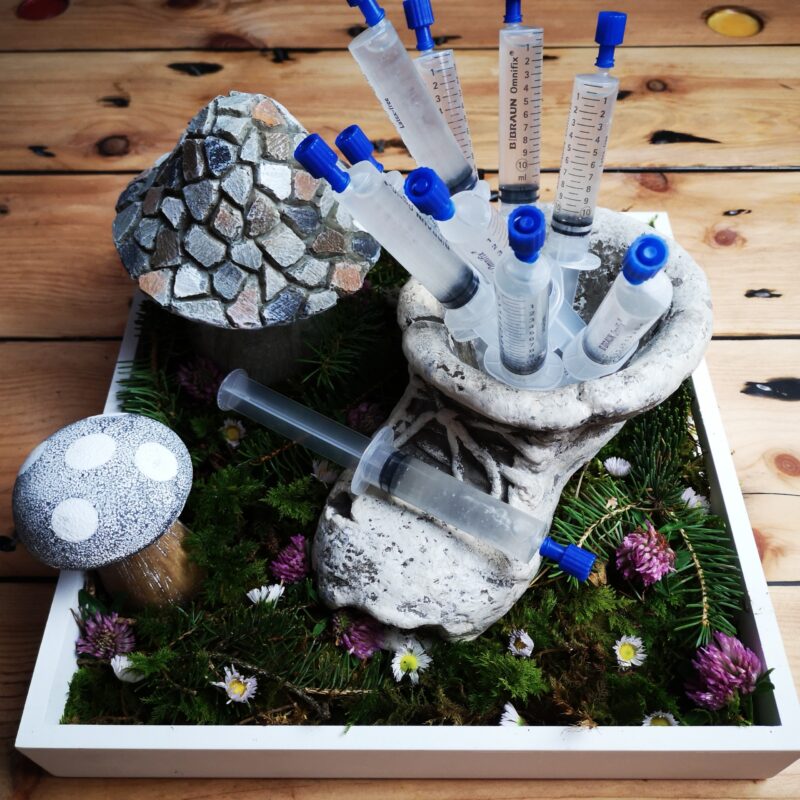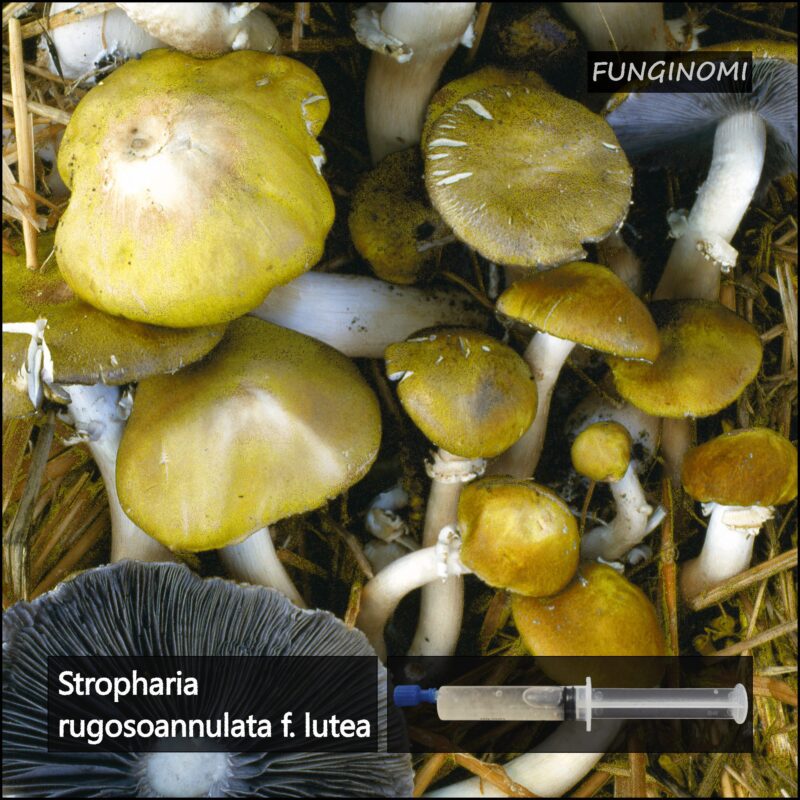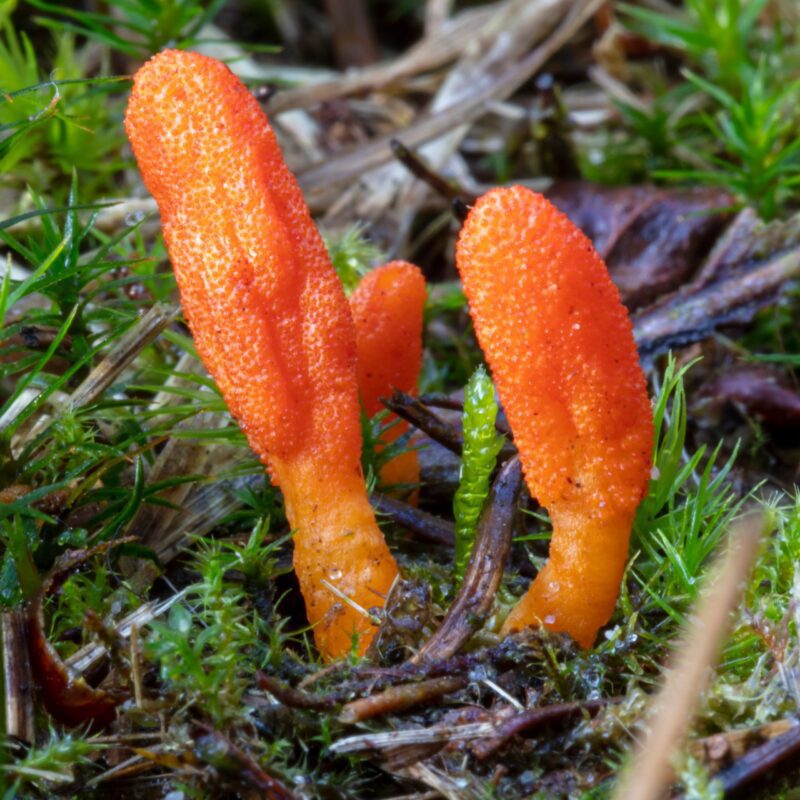Fistulina hepatica
Description
Fistulina hepatica, also called liver mushroom or ox tongue, is a tree mushroom in the liverwort family (Fistulinaceae).
Fistulina hepatica is a xylobiont and lives as a weakling parasite almost exclusively on oaks, rarely also on sweet chestnuts or even more rarely on other deciduous trees such as walnut or ash. Injuries to the tree bark serve as an entry portal for the spores. Inside the trunk, the fungus spreads parasitically, initially hardly harming its host because it life process remain unaffected. Only the heartwood of the central cylinder – which is dead anyway – is affected. This wood decomposition occurs very slowly as the fungus breaks down the tanning-containing heartwood, utilizing the tannis from the parenchyma cells. Wood decomposed in this way eventually shows brown rot.
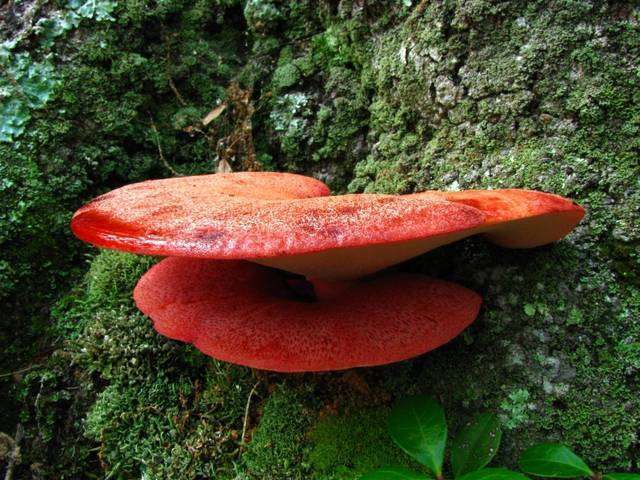
Since this process proceeds slowly and, due to the preferential tannin decomposition, the structure-giving wood components cellulose and hemicelluloses are almost not attacked at all, trees attacked by ox-tongue are still break-proof and stable for a long time; only late does cube breakage occur. The annual fruiting body appears in June/August to October/November mostly on the lower section of the trunk. Initially it pushes out of the trunk like a tongue, in adult specimens the fruiting body stands out from the growing point as a semicircular or fan-shaped bracket.
In the past, the Fistulina hepatica was known in Anglo-Saxon-speaking countries as “poor men’s beefsteak”, because it was found in abundance in the forests and served as a meat substitute when fried in a pan.
Collection August 2024
Grab them, they are hot! 😊
Properties
The importance of the oak liverwort as a wood decomposer is low because of the slowness of this process. The usability of the hardwood is on the one hand reduced by the discoloration, but on the other hand it is precisely because of this that it is sought after for some cabinetmaking work. However, if brown rot-induced decay has already occurred, the wood is no longer usable. Ecologically, ox-tongue is considered a weak natural indicator. The ability of this fungus to break down tannic acid, which the tree actually stores as protection against parasites, can make it easier for other xylobionts to colonize the wood and also weaken it through decomposition. One such example is the clapboard fungus, which often colonizes oaks or sweet chestnuts at their base together with the oak liverwort, or as its successor fungus, preferentially.
The reddish liquid contained in Fistulina hepatica flesh colors the trunk wood dark reddish brown due to storage in parenchyma cells, this is known as hard redness or colloquially as chocolate wood. In most cases, only one fruiting body is formed per infested tree. The Fistulina hepatica is also found on already dead oaks and their stumps. It then lives saprobiontically, that is, as a deadwood decomposer. Rarely, the fungus occurs in its anamorphic form. These cushion-shaped, imperfect or conidia fruiting bodies are given the scientific name Ptychogaster hepaticus (Sacc.) Lloyd. Unusually, the accessory fruiting form of the oak liverwort can produce both conidia and chlamydospores, the latter surviving in certain cells of the host, the fibrous tracheids.
Growing
How to Grow Fistulina hepatica?
Preparation of the Substrate
Materials Needed:
- Hardwood sawdust (oak, chestnut, or beech are ideal)
- Wheat bran or other nitrogen supplements
- Water
Substrate Preparation:
- Mix hardwood sawdust with wheat bran in a ratio of about 5:1.
- Hydrate the mixture until it reaches a moisture content of about 60-65%. The substrate should feel damp but not dripping wet.
Sterilization
- Sterilize the substrate mixture by placing it in autoclavable bags or jars.
- Autoclave at 15 PSI for 90-120 minutes to ensure all contaminants are eliminated.
Inoculation
- Once the substrate has cooled to room temperature, inoculate it with Fistulina hepatica mycelium.
Spawn Rate:
- Use about 5-10% of the total substrate weight in grain spawn.
- Mix the spawn thoroughly with the sterilized substrate to ensure even distribution of the mycelium.
Incubation
- Place the inoculated substrate in a dark, warm area with a temperature range of 20-25°C (68-77°F).
- Allow the mycelium to colonize the substrate fully. This may take several weeks, typically around 4-8 weeks.
- During this period, ensure proper ventilation to avoid CO2 buildup.
PH Levels
Agar Culture Media
5.5 – 6.5
Spawn Run
5.5 – 6.5
Fruiting Phase
5.5 – 6.5
Harvest
none
Any Sale Helps us Doing what we Love 😊
S
|
P
|
F
|
|
|---|---|---|---|
Temp °C |
22-28 | 15-22 | 10-23 |
Relative Humidity % |
85-100 | 90-95 | 75-95 |
Duration d |
18-25 | 3-10 | 5-14 |
CO2 ppm |
>5000 | 500-1000 | <1000 |
FAE per h |
0-1 | 4-8 | 4-8 |
Light lux |
– | 50-500 | 500-1000 |
How to Fruit F. hepatica?
Formation of Fruiting Block
- Once the substrate is fully colonized, it will form a solid fruiting block.
Initiation of Fruiting:
- To initiate fruiting, lower the temperature.
- Increase humidity
- Provide indirect light to simulate a natural environment, about 12 hours of light per day.
- Ensure proper air exchange to avoid stagnation and promote healthy growth.
Fruiting
- After a week or two under fruiting conditions, you should start to see the formation of fruiting bodies.
- Keep the environment humid and well-ventilated to support the development of the mushrooms.
Harvesting:
- Harvest the fruiting bodies when they reach a desirable size. The Beefsteak Fungus is best when young and tender.
- Use a clean knife to cut the mushroom at the base.
- Tips for Successful Cultivation
Patience: This species may take longer to fruit compared to other mushrooms, so patience is key.
Cropping Cycle
Inoculation Phase
- Drill holes into the logs and fill them with Fistulina hepatica spawn (plug or dowel spawn).
- For sawdust substrates, mix the spawn thoroughly with the substrate.
- Seal the inoculation points with wax to prevent contamination and moisture loss.
Spawn Run
The spawn run typically takes 6-12 months for logs, as the mycelium colonizes the wood slowly.
For sawdust substrates, colonization may be faster, taking around 2-3 months.
- Regularly check for signs of contamination and ensure proper ventilation to prevent CO2 buildup.
- Keep the substrate moist but not waterlogged.
Fruiting Phase
Primordia (initial fruiting bodies) will start to form within a few weeks under optimal conditions.
The fruiting phase can last several weeks, with the potential for multiple flushes.
Harvest
Timing:
- Harvest the fruiting bodies when they are firm and have a vibrant, reddish color.
- Fistulina hepatica can produce several flushes over a period of months.
Method:
- Gently twist and pull the fruit bodies from the substrate or logs.
- Avoid damaging the mycelium to allow for subsequent flushes.
Post-Harvest Care:
- Maintain the conditions for fruiting to encourage additional flushes.
- Monitor for any signs of contamination or pest infestations.
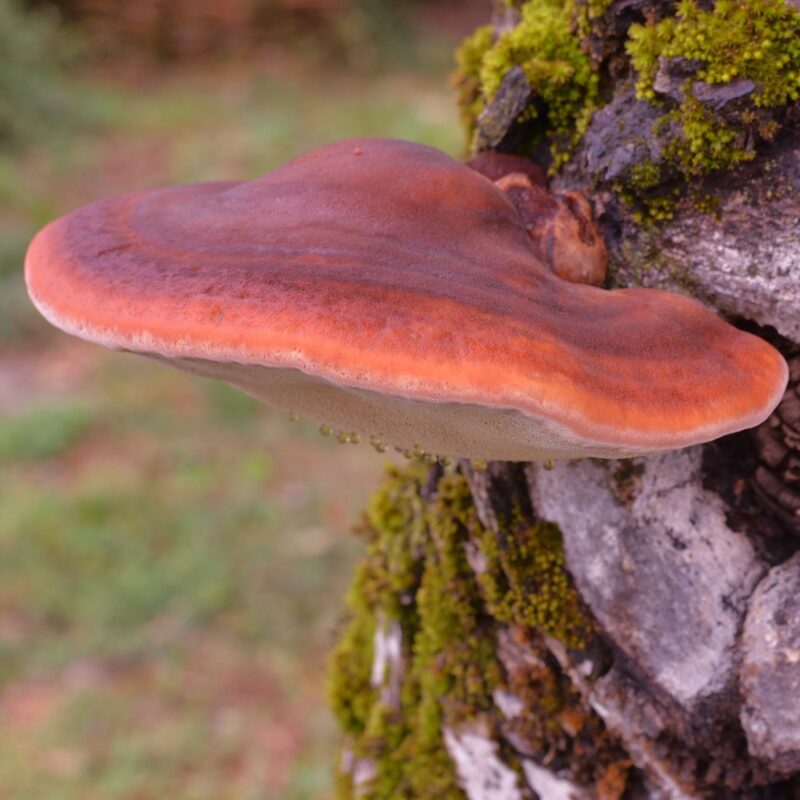
How to make Agar Culture Media?
- Dissolve the ingredients and agar in distilled water.
- Sterilize the solution by autoclaving at 121°C for 15-20 minutes.
- Pour the sterilized media into petri dishes or other containers under sterile conditions.
- Yeast and Peptone are optional, but you can add them to any recipe for nutritions.
Malt Yeast Peptone Agar
MYPA
- 10g Malt extract
- 4g Yeast extract
- 1g Peptone
- 15g Agar
- 1L Distilled water
Standard recipe
Oatmeal Agar
OA
- 30g Oatmeal
- 20g Agar
- 1L Distilled water
Prepare Oatmeal Infusion: Boil 30 grams of oatmeal in 1 liter of water for 30 minutes. Strain to obtain the oatmeal infusion.
Add Agar: Add 20 grams of agar to the oatmeal infusion.
Sterilize: Autoclave at 121°C for 15-20 minutes.
Pour Plates: Cool to 45-50°C and pour into sterile Petri dishes.
Solidify: Allow the agar to solidify before use.
Malt Extract Agar
MEA
- 20g Malt extract
- 20g Agar
- 1L Distilled water
Standard recipe
Potato Dextrose Agar
PDA
- 200g Potatoes (peeled and diced)
- 20g Dextrose (glucose)
- 15g Agar
- 1L Distilled water
Prepare Potato Infusion: Boil the diced potatoes in 1 liter of water until soft. Strain the mixture to obtain the potato infusion.
Add Dextrose and Agar: Add 20 grams of dextrose and 15 grams of agar to the potato infusion.
Sterilize: Sterilize the mixture by autoclaving at 121°C for 15-20 minutes.
Pour Plates: Cool to 45-50°C and pour into Petri dishes.
Solidify: Let the agar solidify before use.
Fruiting Containers
Logs and Stumps
This method involves inoculating freshly cut hardwood logs or stumps with Fistulina hepatica mycelium. The fungus is naturally a wood-decay fungus, making this method highly suitable.
Procedure: Drill holes into the logs, insert dowels or spawn plugs inoculated with the mycelium, and seal the holes with wax to prevent contamination and retain moisture.
Maintenance: Keep the logs in a shady, moist area and water them regularly to maintain humidity.
Plastic Bags (Sawdust or Straw Substrate)
Large plastic bags filled with a mixture of sawdust or straw and a supplement (like wheat bran) can serve as an effective fruiting container.
Procedure: Sterilize the substrate, mix it with the Fistulina hepatica spawn, and fill the bags. Make small holes in the bags to allow for fruiting bodies to emerge.
Maintenance: Keep the bags in a controlled environment with high humidity and moderate temperatures.
Buckets or Bins
Plastic buckets or bins can be used, filled with pasteurized straw or a sawdust-based substrate.
Procedure: Drill holes around the bucket for ventilation and fruiting. Fill the container with the substrate, inoculate with spawn, and seal with a lid or plastic wrap, leaving some openings for airflow.
Maintenance: Maintain humidity by misting and keeping the containers in a humid environment.
Outdoor Beds
Creating outdoor beds with hardwood chips or a mix of sawdust and straw can mimic natural growing conditions.
Procedure: Prepare a bed by laying down a mixture of hardwood chips or sawdust/straw, inoculate with spawn, and cover with a layer of soil or mulch to retain moisture.
Maintenance: Water the beds regularly to keep the substrate moist, especially during dry periods.
Substrate
Mixing Ratios: Typically, the substrate can be supplemented with 5-10% bran, 1-2% gypsum, and other additives depending on specific requirements. For instance, a substrate mix might include 90% hardwood sawdust, 5% bran, 3% soybean meal, and 2% gypsum.
Sterilization/Pasteurization: To prevent contamination, substrates should be sterilized or pasteurized before inoculation with Fistulina hepatica spawn.
Moisture Content: Maintain a moisture content of around 60-65% for optimal mycelial growth.
- Hardwood Logs: Preferred species: Oak, Chestnut, Beech, and other hardwoods.
- Hardwood Chips: Used in outdoor beds or mixed with other substrates.
- Sawdust: Hardwood sawdust is preferred over softwood due to nutrient content.
- Straw: Can be used alone or mixed with other substrates like sawdust.
- Paper and Cardboard: Recycled paper and cardboard, though less common, can be used effectively.
- Compost: A mixture of decomposed organic matter, though not as typical for Fistulina hepatica, can support growth.
Additives for Growing
- Bran: Wheat bran, rice bran, or oat bran can be mixed into substrates to increase nutritional content.
- Soybean Meal: Adds a significant amount of protein and nitrogen, aiding in vigorous mycelial growth.
- Cornmeal: Another source of carbohydrates and proteins.
- Cottonseed Meal: Provides a high protein content.
- Alfalfa Meal: Adds nitrogen and other micronutrients.
- Chicken Manure: High in nitrogen but must be used sparingly due to its high concentration.
- Fish Emulsion: Provides a balanced nutrient profile but should be used carefully to avoid over-saturation.
Biological efficiencie
The biological efficiency (BE) of Fistulina hepatica, also known as the beefsteak fungus, typically ranges between 60% to 80%. This means that for every 100 grams of substrate, 60 to 80 grams of mushrooms can be harvested. Factors affecting BE include substrate quality, environmental conditions, and the method of cultivation. Optimal substrate moisture, adequate aeration, and proper temperature control are crucial for maximizing yield. This species' ability to break down lignin and cellulose in hardwood substrates contributes significantly to its efficient fruiting.
Sometimes we miss a piece
Growing Chracteristics
Weakness parasite, secondary decomposer, brown rot trigger
Identification
Natrual Habitat
Fistulina hepatica has a nearly cosmopolitan distribution and occurs in Europe preferentially in thermophilic mixed deciduous forests, especially on calcareous soils. Its distribution area follows that of the oak or sweet chestnut. In Germany the occurrence of the ox-tongue is not frequent, but scattered. The frequency varies regionally and in some places shows a slight tendency to decline. Nevertheless, this fungus should be protected, since due to the declining area of near-natural oak forests (in a forest used for forestry purposes as well as in parks, diseased trees and dead wood - the hosts of the oak liverwort - are removed), an endangerment of the species can be assumed. Outside of Europe, this fungus is native to North America, South America, where its host trees include false beech (Nothofagus), and the subtropical montane forests of India. There are also populations in Australia growing on eucalyptus.
Mixed forest, floodplain forest, mainly on deciduous trees, preferably oaks, beeches, willows, needs stands of old oaks, also on eucalyptus, likes areas with calcareous soil conditions, summer to late fall.
How to identify F. hepatica
Cap
5-25 (35) cm Ø
6-8 (9) cm thick
reddish, beige-red, blood red, old wine red to dark brownish red
white margins as growing point
radially striped
secreting a mucilaginous-resinous red secretion when immature
skin easily peeled
console shaped
multiple with smaller specimens arranged one above the other
Hymenium
pores
pale yellow, later reddish, reddish brown
turning brownish on pressure
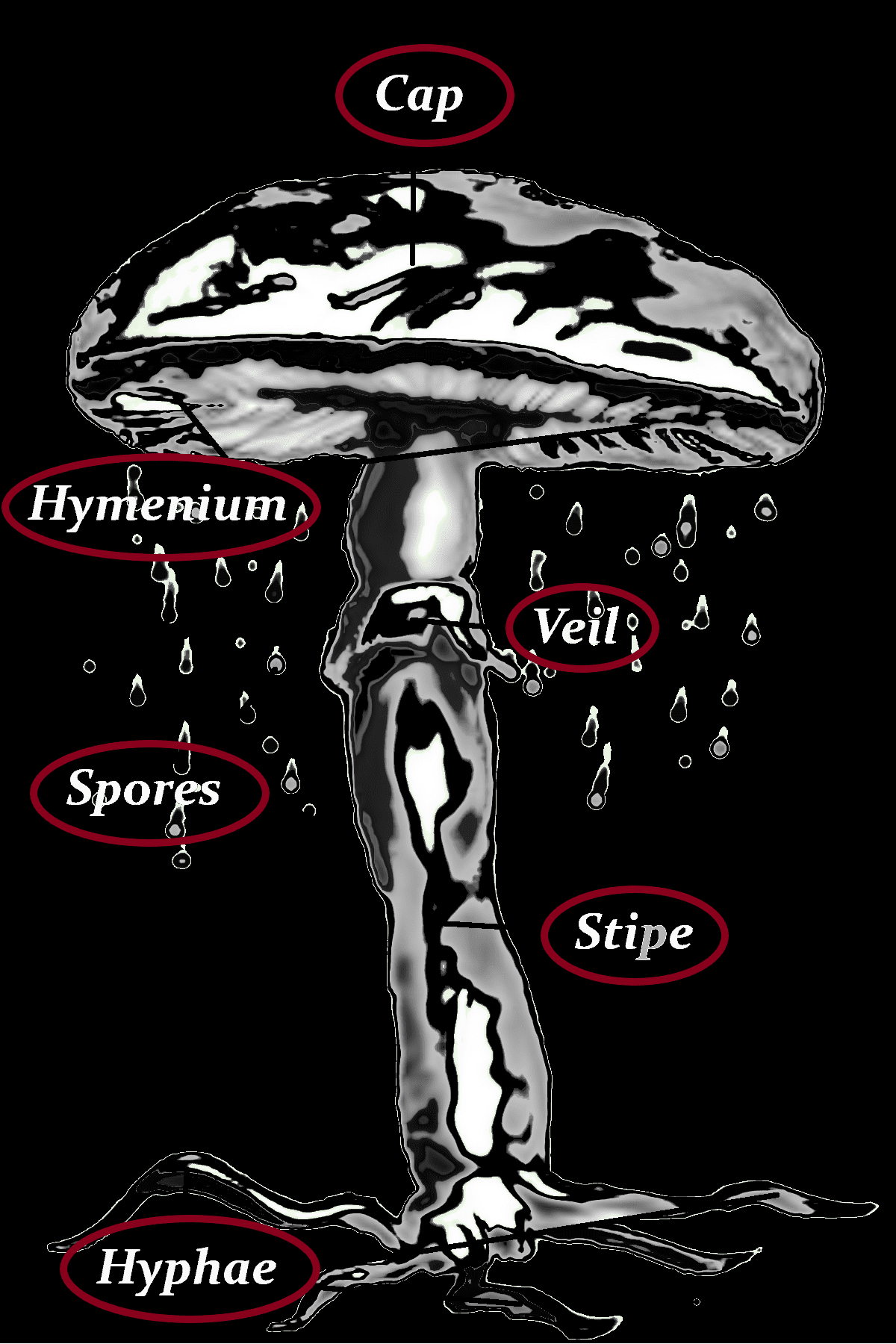
Stipe
short
side-stemmed
irregular
Veil
thin
hanging
quickly ephemeral
Spores
light brown
3.5-5 x 2.5-3.5 µm
ovoid
basidia each with 4 sterigmas to 4 spores
chlamydospores with strongly thickened cell walls
mostly elongated
cystidia not present on hymenium
Danger of confusion
Pseudohydnum gelatinosum (Toothed Jelly Fungus), Ganoderma species (Reishi Mushrooms), Laetiporus sulphureus (Chicken of the Woods), Ischnoderma benzoinum (Resinous Polypore, Daedalea quercina (Oak Mazegill)
Hyphae
thin-walled branched hyphae
with buckles and septa
Consuming
Gorumet Perception
Fistulina hepatica has a bitter and slightly bitter taste that can be mitigated by preparation. Beefsteak mushrooms are edible when young, although they are not poisonous; However, despite the fleshy appearance of the mutilated bodies, they had a nasty bitter taste. Older specimens become mature and "woody." It can be prepared in a variety of ways and is considered a raw food, but it is not considered a great food mushroom. Due to the high amount of tannin, the mushroom is difficult to digest and has a bitter taste.
Smell
pleasantly mushy
Taste
mild, sour, lemon
Flesh
flesh reddish, soft
Here’s how to unlock the true root of Your Brain
– Without worrying about low quality ingredients
Nutritional content of 100g
- Approximately 34 kcal
- Protein: Around 3.4 grams
- Fat: Minimal amount, usually less than 0.5 grams
- Carbohydrates: About 6.4 grams
- Fiber: Provides roughly 3.4 grams
- Vitamins and Minerals: Contains varying amounts of essential nutrients such as potassium, phosphorus, magnesium, and vitamins B1 (thiamine) and B2 (riboflavin).
- Water Content: High, contributing significantly to its weight.
- Sugar Content: Generally low.
- Sodium: Naturally low in sodium.
Composition
Fistulina hepatica, commonly known as beefsteak fungus, stands out in the fungal kingdom for its unique composition. This mushroom is notably rich in an unusual pigment called "fistulin," which gives it its distinctive red coloration. Beyond its aesthetic appeal, Fistulina hepatica contains significant amounts of polysaccharides, particularly beta-glucans, known for their immune-modulating properties. It also provides a range of essential minerals such as potassium, phosphorus, and magnesium, along with vitamins B1 (thiamine) and B2 (riboflavin).
Immunostimulating Compounds
Polysaccharides
Fistulina hepatica contains a variety of polysaccharides, notably beta-glucans. These compounds are known to enhance immune function by activating immune cells such as macrophages and natural killer cells. They help the body combat infections and strengthen overall immune defenses.
Antioxidant Compounds
Phenolic Compounds
The mushroom contains various phenolic compounds including flavonoids and phenolic acids. These substances act as antioxidants, scavenging free radicals in the body and reducing oxidative stress. By neutralizing free radicals, they help prevent cellular damage and reduce the risk of chronic diseases.
Fatty Acids
Essential Fatty Acids
Despite its low overall fat content, Fistulina hepatica contains small amounts of essential fatty acids, including linoleic acid. These fatty acids are crucial for maintaining healthy cell membranes, supporting brain function, and regulating inflammation in the body.
Unique/Important Compounds
Fistulin
The characteristic red color of Fistulina hepatica is attributed to a pigment called fistulin. Although the exact biological role of fistulin is not fully understood, it is considered a unique and potentially bioactive component within the mushroom.
Vitamin-Rich Components
B Vitamins
Fistulina hepatica is a source of several B vitamins, including thiamine (B1) and riboflavin (B2). These vitamins play essential roles in energy metabolism, nerve function, and maintaining healthy skin and eyes.
other names
| Chinesisch (traditionell) | 牛排菌 |
| Deutsch |
Eichen-Leberreischling
|
| Deutsch |
Leberreischling
|
| Deutsch | Ochsenzunge |
| Dänisch | Oksetunge |
| Englisch |
Beefsteak Fungus
|
| Englisch |
Beefsteak Polypore
|
| Estnisch | maksak |
| Finnisch | häränkieli |
| Französisch |
Langue de boeuf
|
| Galizisch | Fígado de boi |
| Japanisch | カンゾウタケ |
| Litauisch |
Ąžuolinė kepena
|
| Magyar | Májgomba |
| Niederländisch | Biefstukzwam |
| Norwegisch |
oksetungesopp
|
| Polnisch |
Ozorek dębowy
|
| Russisch |
Печёночница обыкновенная
|
| Schwedisch | Oxtungsvamp |
| Schwedisch | oxtungssvamp |
| Spanisch | Hongo bistec |
| Tschechisch | pstřeň dubový |
| Ukrainisch |
Печіночниця звичайна
|
| Ungarisch | Májgomba |
| Wissenschaftl. Name |
Fistulina hepatica
|
Fistulina Hepatica, Ptychogaster Hepaticus, Fistulina Hepatica Var. Endoxantha, Confistulina Hepatica, Fistulina Endoxantha, Ceriomyces Hepaticus, Leberreischling, Ochsenzunge, Ochsenauge, Leberpilz, Eichen-Leberreischling
Taxonomical Hierarchy
| Kingdom | Fungi |
|---|
| Division | Basidiomycota |
| Class | Agaricomycetes |
| Order | Agaricales |
| Family | Fistulinaceae |
| Genus | Fistulina |
| Species | F. hepatica |
| Ecology | Parasitic |
Any Sale Helps us Doing what we Love 😊










